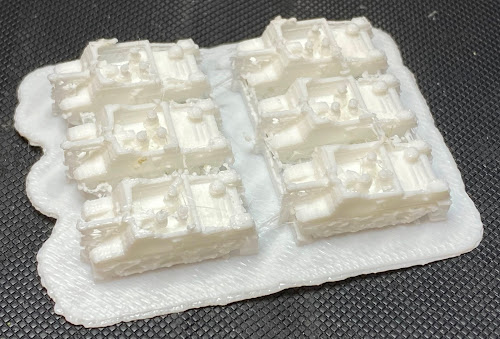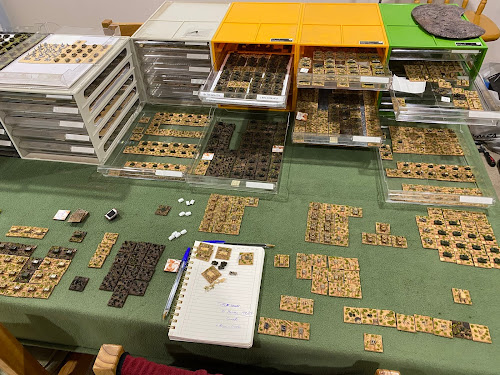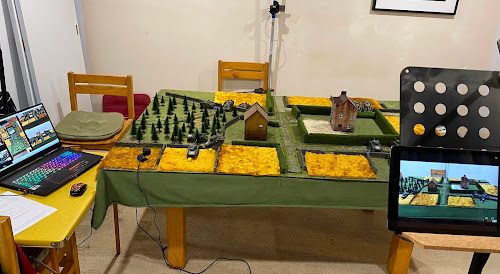A Saturday afternoon spent organising the WW2 British Armoured Divisions for Spearhead. Spearhead is a great set of rules that has been around a long time. It allows very large games to be played and handles single or multiple players per side with ease.
These British had originally been put together for 1942 North Africa. However, since Mike's big table is green, I decided to convert them so that the bases would be greener.
I decided to make one Armoured Division to cover the greener parts of Tunisia/Sicily/Italy. It would be set up for the 1943 British Armoured Division organisation in Spearhead but with additional figures that could morph it into 1944.
The other Armoured Division would be set up for western Europe 1944.
I last looked at these a few years ago, so I was surprised how many I actually had tucked away. Some were finished, but some were only base coated (familiar story for wargamers).
The good thing about 6mm is that you can store a lot in a small space. 6mm is the approximate height of a person. It is more generically known as micro armour. It covers both 1:285 and 1:300, although the latter is sometimes called 5mm scale.
1:285 is a scale introduced in the 1960s by the US military for training. For cast metal GHQ is considered the "Rolls Royce" due to their amazing detail, but can be quite expensive, particularly in Australia if the exchange rate to USD is not good. PFC-CinC also make in this scale. They have a very wide range.
1:300 is a scale used by NATO. Heroics & Ros, Scotia Grendel and Irregular Miniatures are popular manufacturers in this scale with wide ranges.
Increasingly available are 3D printed models, available as the STL files (many for free on sites such as Thingiverse) or as printed models from sites such as Shapeways, although the latter can be pricey.
The plastic 5-drawer units readily available from stationery suppliers make ideal and compact storage.
To keep the models organised I sticky taped some tinplate sheet which I purchased from model railway and hobby stores. Unfortunately 2 of these are not quite A4 since they are made in the USA. Another downside of the tinplate sheet is that the slightest scratch will eventually rust.
A better alternative is to get zinc-plated steel if you can get it thin enough and cut to size. Whatever you use, it must be ferrous metal so the magnet on the bases will "stick". So no good using brass, aluminium or plastic sheet.
I then have A4 paper sheets that I designed in Microsoft Excel and printed. This makes it easy to see which models I still need. Also makes choosing units and packing up at the end of a game easier. I do not bother sticking the sheet down as it only needs a couple of bases to hold it in place. It also makes it easier to replace if I change organisation or it gets torn or scuffed.
For the 30x30mm bases I use a good quality carboard or art board. Underneath I stick magnetic sheet cut to size. This holds the base in place against the metal sheet.


















